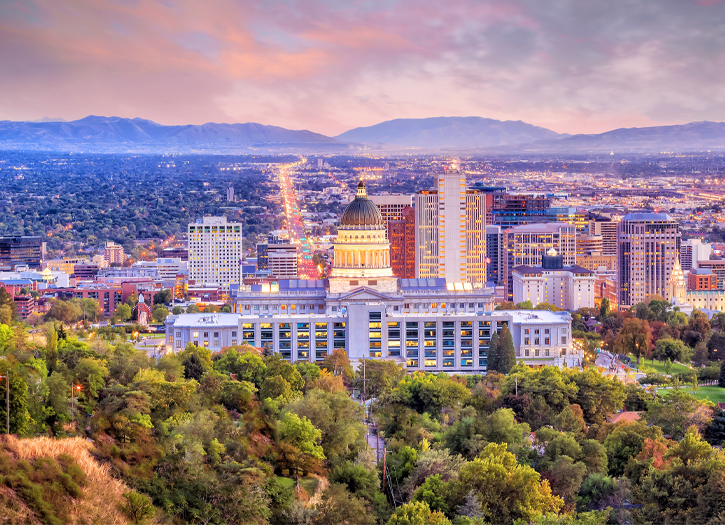The COVID-19 pandemic began in the U.S. state of Utah in early March with travel-related cases. Residents stockpiled goods, large conferences were made remote-only, postponed, or cancelled; astate of emergency was declared, and all public universities and other colleges switched to online-only classes. After the first case of community spread was found on March 14, Utah faced a shortage of testing kits, and public schools were ordered to be closed.
In late March, the state directed all people to voluntarily stay at home as much as possible. Salt Lake, Davis, Weber, Morgan, Tooele, Summit, and Wasatch counties directed people to stay at home except for essential activities. In April, the state briefly ordered all adults entering the state to fill out an online travel declaration. It established phased guidelines for the public to follow and moved from the “red” phase to the “orange” phase at the start of May, advising people to leave home infrequently, staying six feet away from others and wearing face masks when in public.
On March 6, Governor Herbert declared a state of emergency. The Department of Health confirmed that a former passenger on the Grand Princesswas the first (presumptive) case of coronavirus in Utah.Weber County reported a confirmed case on March 10, the second in the state, in a woman who had traveled both domestically and abroad.On March 8, the University of Utah Hospitalset up negative-pressure tents to assess patients for the coronavirus.On March 11, Utah Jazz player Rudy Gobert became the first NBA player to test positive for the coronavirus, prompting the NBA to suspend its season. Several teams were told to self-quarantine.
On March 12, Governor Herbert recommended that all gatherings of more than 100 should be cancelled for the next two weeks. All colleges and universities in the state announced that all classes would be moved online for the remainder of the semester. The Church of Jesus Christ of Latter Day Saints announced that all gatherings would be cancelled worldwide until further notice. On March 13, Governor Herbert announced that all school districts in the state would enact “soft closure” for two weeks beginning Monday, March 16.
On March 17, the LDS Church ordered all nonnative missionaries removed from the Philippines. Public businesses were ordered closed in southeastern counties covering Moab where many travelers were expected. Westminster College postponed its commencement ceremonies. The state issued a public health order prohibiting dine-in service in restaurants for two weeks and gatherings of more than 10 individuals, with an exception for grocery stores. Community spread was confirmed in Utah County. All public universities and colleges postponed their commencement ceremonies.
Community spread was confirmed in County. On March 19, City Creek Center announced that it would close, and Salt Lake County banned gatherings of more than 10 people for 30 days. On March 20, the state announced that it intended to postpone the deadline for filing state taxes. University Health announced that it will offer drive-up assessments; it had already set up drive-up testing stations.
By September 1, there had been 14 outbreaks in schools since public schools began opening on August 13.On September 4, the seven-day average number of new cases rose again to 411. The number of school outbreaks for the new school year rose to 27.The upward trend in new cases continued in mid-September, driven by an increase in cases among college-aged people in Utah County. The seven-day average rose to 487.On September 16, the seven-day average of new cases rose to 585, the highest since peaking at 669 per day on July 22.By September 20, the seven-day average of new cases had risen to 835. On September 24, the seven-day average number of new daily cases rose to a record of 916.
A statewide state of emergency was declared by Governor Herbert, and all schools were ordered closed and to switch to online classes by March 18. Statewide high school activities were canceled. The public school closure was extended through May 1. Later it was extended for the rest of the school year.The state prohibited gatherings of more than 10 individuals, with exceptions, and dine-in service in restaurants.







Add Comment
You must be logged in to post a comment.